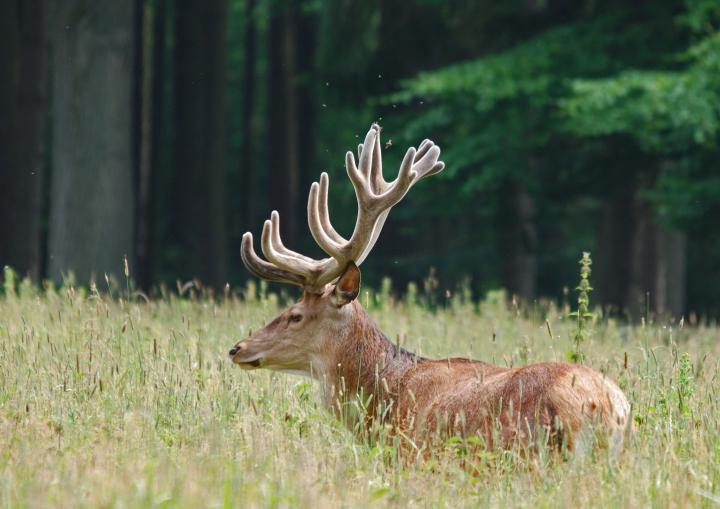Research from Göttingen points to wildlife grazing as an approach for nature conservation management

Credit: Marcus Meißner
Similar to farm animals such as cattle or sheep, wild red deer grazing in open landscapes can also contribute to the conservation of protected habitats. This was demonstrated by a research team from the University of Göttingen and the Institute for Wildlife Biology of Göttingen and Dresden. The results were published in the Journal of Applied Ecology.
The interdisciplinary research team, which involved the Divisions of Grassland Science and Wildlife Sciences of the University of Göttingen, conducted research over a period of three years at the Grafenwöhr Training Area, an army training base, in Bavaria. “This area is home not only to numerous protected habitats and rare species, but also to a large population of free-ranging red deer,” says Friederike Riesch, PhD student in the Division of Grassland Science at the University of Göttingen and first author of the study. Since the animals are only hunted on a few days a year in the non-forested areas of the training area, they can use the grassland and heathland areas all day for foraging. The scientists recorded above-ground plant growth, forage quality and forage removal by red deer in protected grassland and heath habitats. The result: the proportion of plant growth eaten by wild red deer is comparable to that of extensive grazing by farm livestock.
While the forage removal of the red deer was highest in spring in grassland, the heaths were grazed most intensively in winter. These different seasonal patterns fit well with the different grazing requirements of vegetation communities in grassland and heath and contribute to both habitat types benefiting from red deer. “Our results could give an impetus to adapt wildlife management – especially in large nature reserves – to enable red deer to use open landscapes all day for foraging,” says Riesch. “In this way, a contribution can be made to the conservation of semi-natural open land habitats and at the same time the risk of damage from red deer in commercial forests can be reduced,” adds co-author Dr Bettina Tonn, also from the Division of Grassland Science at the University of Göttingen.
###
The project was funded by the Landwirtschaftliche Rentenbank and supported by Bundesforst.
Original Publication: Riesch, Friederike et al. Grazing by wild red deer: Management options for the conservation of semi-natural open habitats. Journal of Applied Ecology (2019). Doi: https:/
Contact:
Friederike Riesch
University of Göttingen
Department of Crop Sciences
Grassland Science
Von Siebold Straße 8, 37075 Göttingen
Tel: +49 (0) 551 39-22352
Email: [email protected]
Media Contact
Melissa Sollich
[email protected]
Original Source
https:/
Related Journal Article
http://dx.




